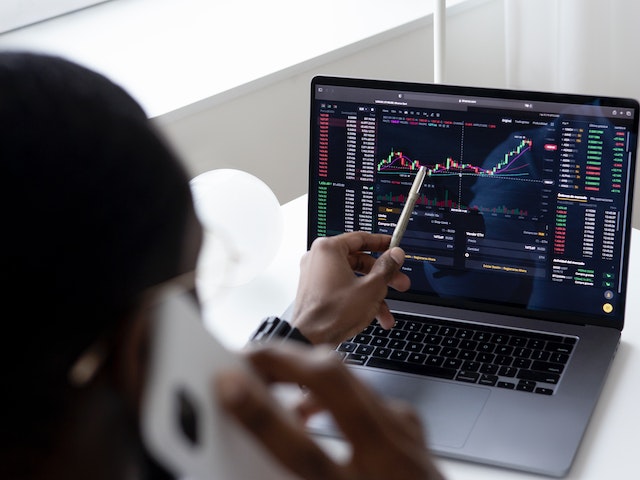In the bustling real estate market of Baltimore, homeowners are continuously seeking ways to enhance the value of their properties. One effective strategy is enlisting professional Baltimore deck builders to add a high-quality deck. This addition is not just a means to beautify a home but is a sound investment that can yield significant financial returns. In this article, we will explore how investing in a well-designed deck can increase your property’s resale value and attract potential buyers.

The Appeal of Outdoor Living Spaces
The trend towards outdoor living has grown exponentially, particularly in cities like Baltimore where urban and natural landscapes blend seamlessly. Decks are highly sought after as they extend living spaces outdoors, providing a perfect setting for relaxation, entertainment, and enjoying the outdoors. A deck acts as a transition zone between the indoor comforts and the natural environment, effectively increasing the functional square footage of your home.
Increasing Property Resale Value

One of the most compelling reasons to consider building a deck is the potential increase in your property’s resale value. According to industry studies, homeowners can recoup an average of 70% to 80% of the construction costs of a deck in the property’s resale value. This return on investment (ROI) is competitive when compared to other home improvement projects. For Baltimore homeowners, where outdoor living is prized, a deck can be a particularly wise investment.
Cost vs. Value: What to Consider
When planning for a deck, it’s crucial to consider several factors to maximize your investment:
- Material Choices: The type of materials used can significantly affect both the cost and the longevity of your deck. Traditional wood decks, while popular for their natural look, require regular maintenance. Composite decking, although more expensive upfront, offers greater durability and less maintenance, which can be more appealing to future buyers.
- Design and Aesthetics: The design of the deck should complement the architectural style of your home. A well-designed deck that flows seamlessly with the house’s existing structure and design will appeal more to potential buyers than one that appears tacked on or disjointed.
- Functionality: Consider features that enhance the usability of the deck. Built-in benches, fire pits, and adequate lighting can transform a simple deck into a versatile outdoor living space.
Attracting Potential Buyers
A deck can significantly enhance the curb appeal of your home, making it stand out in the competitive Baltimore real estate market. For potential buyers, a deck visually represents an additional living space where they can imagine themselves spending time, hosting gatherings, or relaxing. This emotional connection can be crucial in their decision-making process.
Local Market Trends in Baltimore
Baltimore’s unique market trends should influence the planning and design of your deck. The city’s historic charm combined with its modern urban lifestyle means that both traditional and contemporary deck designs can be appealing. Understanding local preferences and incorporating them into your deck design can increase its appeal to a broader audience.
Legal and Regulatory Considerations
Before embarking on a deck-building project, it’s essential to understand the local building codes and regulations in Baltimore. Securing the necessary permits can prevent legal issues and ensure that the deck is built to safety standards, which is another key selling point for potential buyers.
Conclusion
Adding a deck to your Baltimore home can be a lucrative investment. Not only does it enhance your immediate enjoyment of your property, but it also contributes to its long-term value by appealing to potential buyers’ desires for attractive and functional outdoor spaces. By carefully considering materials, design, and local market trends, and adhering to regulatory requirements, you can maximize the financial benefits of this popular home improvement project. This strategic addition can be the deciding factor that sets your home apart in the bustling Baltimore real estate market.
In the serene town of New Braunfels, where the Guadalupe and Comal Rivers weave their way through picturesque landscapes, there exists a unique connection between two seemingly disparate worlds: the art of tree services and the intricacies of the share market. While one involves nurturing and cultivating the natural beauty of trees, the other revolves around nurturing and cultivating financial wealth. Surprisingly, these two worlds share more similarities than one might initially assume, offering a fascinating perspective on how the principles of one can be applied to the other for fruitful outcomes.
At first glance, you might wonder how trimming branches and analyzing stock trends could possibly intersect. However, a deeper exploration reveals valuable lessons that can be gleaned from the practices of New Braunfels tree service, which parallel the journey of growing wealth through investments in the share market.

Patient Nurturing Yields Fruitful Results
Tree services professionals in New Braunfels understand that nurturing a tree to its fullest potential requires time, patience, and deliberate care. Just as a young sapling needs consistent attention to grow into a majestic oak, investments in the share market demand patience and a long-term perspective. The practice of “buy and hold” aligns remarkably well with the idea of cultivating healthy trees. Just as tree services experts wait for the right time to prune and shape trees, investors who patiently weather market fluctuations are often rewarded with compounding returns over time.
Diversification Creates a Resilient Ecosystem
Trees in a well-manicured landscape are often strategically spaced and varied in species, contributing to a resilient ecosystem. Similarly, diversification is a cornerstone of both successful tree management and a robust investment portfolio. In the tree services industry, reliance on a single tree species can make an entire landscape vulnerable to disease or pests. In the share market, putting all your resources into a single stock can expose your portfolio to undue risk. Just as tree services experts carefully select a mix of tree species, investors should diversify their holdings to ensure resilience against market volatility.
Pruning for Growth and Risk Management
Pruning is a vital aspect of tree care, ensuring healthy growth by removing dead or diseased branches. Similarly, prudent investors engage in regular “pruning” by periodically reviewing their portfolios and trimming underperforming assets. This practice minimizes risk and frees up resources to be allocated to more promising opportunities. Just as tree services professionals assess the health of each branch, investors evaluate the performance of each investment, making informed decisions to promote overall growth.
Adapting to Changing Seasons
Tree services experts are acutely attuned to the changing seasons and their impact on tree health. Different times of the year call for specific care practices, such as fertilization in the spring and protective measures in the winter. Likewise, investors need to adapt their strategies based on market cycles and economic conditions. Recognizing the correlation between changing seasons and market trends enables investors to make more informed decisions and capitalize on opportunities.
Strong Roots and Sustainable Growth
A healthy tree boasts strong, deep roots that anchor it securely and provide access to essential nutrients. Similarly, a strong investment foundation relies on thorough research, a solid understanding of financial principles, and a commitment to sustainable growth. Just as tree services professionals ensure trees have access to the nutrients they need to thrive, investors must continuously educate themselves to make well-informed decisions that contribute to long-term wealth accumulation.
Conclusion
In conclusion, the parallels between tree services and the share market in New Braunfels reveal a remarkable symmetry between nurturing healthy trees and cultivating a robust investment portfolio. The patience, diversification, risk management, adaptability, and focus on sustainable growth demonstrated by tree services professionals offer valuable lessons that can be applied to the world of investing. By embracing these lessons and recognizing the interconnectedness of nature and finance, individuals can navigate the complex landscape of investments with greater confidence and ultimately harvest the fruits of their patient and informed decisions.
As you stroll through the streets of New Braunfels, take a moment to appreciate the wisdom hidden within the branches of its trees, and consider how the lessons learned from their care can shape your approach to growing wealth in the share market. Just as a well-tended tree flourishes over time, so too can your investments thrive with careful nurturing and thoughtful management.
As an arborist operating in Austin’s vibrant tree services industry, you are no stranger to the unique challenges and opportunities this field presents. From nurturing majestic oaks to taming unruly branches, your expertise keeps the city’s urban landscape thriving. While you dedicate your efforts in providing Austin TX Best Tree Services, it’s crucial to also nurture your financial growth and stability through smart investment strategies.

The Arborist’s Dilemma: Balancing Passion with Profit
Arborists are inherently passionate about trees and the environment, often putting their heart and soul into their work. However, passion alone doesn’t guarantee financial success. Striking a balance between your love for trees and your business’s profitability is essential. Here are some tailored investment strategies to guide you on your journey.
Diversify Your Revenue Streams
Relying solely on tree maintenance services might limit your income potential. Explore diversification by offering value-added services such as tree health consultations, landscape design, or even selling specialty tree care products. These additional revenue streams can provide a stable foundation for your finances, especially during seasonal fluctuations in demand.
Invest in Education and Certification
Knowledge is a valuable asset. Invest in continuous education and certifications to enhance your skills and credibility. Enroll in workshops, attend industry conferences, and pursue certifications such as the International Society of Arboriculture (ISA) credential. These investments not only improve your expertise but also position you as a trusted authority in the field, attracting more high-paying clients.
Create a Financial Safety Net
The tree services industry can be unpredictable, with external factors like weather and economic downturns affecting demand. Establish an emergency fund to ensure your business can weather unforeseen challenges. This safety net provides peace of mind and allows you to make strategic decisions without financial stress.
Invest in Equipment and Technology
Efficiency is the key to profitability. Consider investing in modern tree care equipment and technology that streamline your operations. While the initial costs may seem significant, the long-term savings in time and labor can significantly impact your bottom line. Additionally, advanced equipment can allow you to take on more complex and higher-paying jobs.
Explore Sustainable Practices
Austin’s commitment to environmental sustainability aligns well with the values of the tree services industry. Embrace sustainable practices that resonate with eco-conscious clients. This could include advocating for tree preservation, promoting organic fertilizers, or incorporating renewable energy solutions into your operations. Not only do these practices contribute to the environment, but they can also attract a premium clientele willing to pay for your environmentally friendly services.
Invest for Retirement
In the hustle and bustle of daily operations, retirement planning can often take a back seat. However, securing your financial future is paramount. Explore retirement investment options tailored to small business owners, such as Simplified Employee Pension (SEP) IRAs or Solo 401(k)s. These plans offer tax advantages and allow you to save for retirement while benefiting from potential investment growth.
Collaborate and Network
Engage with fellow arborists, landscapers, and professionals in related fields to expand your network. Collaborative efforts can lead to joint ventures, cross-promotions, and access to new markets. Additionally, networking provides opportunities for mentorship and shared insights on successful investment strategies.
Conclusion
As an arborist in Austin’s tree services industry, your dedication to nature and community is commendable. However, to ensure long-term financial growth and stability, it’s crucial to adopt smart investment strategies that align with your passion. Diversify your revenue streams, invest in education and technology, and prioritize sustainable practices. By taking a proactive approach to your finances, you’ll not only nurture the city’s trees but also your own prosperity. Remember, just as trees require care and attention to flourish, so too does your financial future.

China is popular for its rich cultural heritage and rapid economic development and has emerged as a global economic powerhouse in recent decades. China’s financial markets have significantly contributed to this economic growth, which has transformed from being relatively closed and controlled to becoming increasingly open and dynamic. As a result, China’s financial markets, including its stock, bond, and currency markets, have been instrumental in shaping the country’s economic landscape and driving its global economic influence.
One of the key pillars of China’s financial markets is its stock market. China’s stock markets have attracted domestic and international investors, and many Chinese companies have gone public, raising capital through initial public offerings (IPOs). The SSE and SZSE have become important venues for companies to access funding for their expansion plans and investments, driving economic growth in China.

The Chinese Financial Markets
China’s bond market is another crucial component of its financial markets. China’s bond market has witnessed tremendous growth in recent years, becoming the world’s second-largest bond market after the United States. The bond market provides financing for the government, corporations, and other entities, offering diverse investment options to investors. China has also opened its bond market to international investors, attracting global institutional investors and boosting its integration into the global financial system.
Additionally, China’s currency market has been gaining prominence in recent years. The Chinese yuan also called the renminbi (RMB), has been gradually internationalizing with China’s efforts to promote using RMB in international trade and investment. China has taken steps to liberalize its currency market, allowing for greater flexibility in exchange rates and encouraging the use of RMB in cross-border transactions. The RMB has also been included in the International Monetary Fund’s (IMF) Special Drawing Rights (SDR) basket, elevating its global currency status and increasing its acceptance in international transactions.
Its regulatory reforms have also shaped China’s financial markets. The Chinese government has implemented various measures to strengthen the stability and transparency of its financial markets, including enhancing regulatory oversight, improving corporate governance, and promoting market-oriented reforms. In addition, China has also taken steps to enhance its risk management practices and address financial stability and systemic risk concerns. These regulatory reforms have helped to boost investor confidence and attract more investment into China’s financial markets.
Furthermore, China’s financial markets have been driven by its ambitious economic development plans, such as the Belt and Road Initiative (BRI). The BRI, launched in 2013, is a massive infrastructure development project to enhance connectivity and economic cooperation among countries along the ancient Silk Road routes. The BRI has created new opportunities for investment and financing, including through China’s financial markets, as it seeks to fund various infrastructure projects in partner countries. As a result, China’s financial markets have played a crucial role in supporting the funding needs of the BRI, facilitating investments and trade flows between China and other countries, and promoting economic development and global trade.

Challenges and risks involved
China’s financial markets have also faced challenges and risks. As with any financial market, there are concerns about market volatility, liquidity risks, and potential financial imbalances. China has been vigilant in addressing these risks, implementing measures to manage them, and enhancing its regulatory framework to ensure the stability and integrity of its financial markets.
Conclusion
In conclusion, China’s financial markets have been a significant driver of its economic growth and global economic influence. With the opening up of its stock market, its bond market’s rapid growth, and its currency’s internationalization, China’s financial markets have become increasingly integrated into the global financial system. Regulatory reforms, economic.
The CapitalVue Terminal provides real-time news and updates on the most important developments impacting financial markets, industries and the economy. We provide our clients with an advantage by delivering reliable news coverage on thousands of listed companies.
Premium Subscribers have access to:
Key developments, speculation, announcements, commentary and regulatory updates
- Content drawn from hundreds of sources
- Financial portals, business newspapers and publications, industry portals, and industry association websites
- Direct feeds from exchanges as well as corporate publishing channels
- Government channels for the latest government policy and regulatory updates
- Related news stories from third party providers and RSS feeds
Daqin Railway (601006) said 2010 net profit increased 46 percent year-on-year to 10.41 billion yuan, with earnings per share of 0.7 yuan, reports Securities Times, citing a company filing.
Revenue increased 26 percent to 42.01 billion yuan.
The company transported 476 million tons of cargo in 2010, accounting for 15 percent of the 3.08 billion tons of national cargo transported by rail.
Coal transportation volume totaled 401 million tons last year, accounting for 26 percent of the 1.56 billion tons of coal transported by rail in China.
The Ministry of Railways had since December 2009 raised the price of cargo transport by 0.007 yuan per ton-kilometer. This increased the company’s revenues from cargo transport, passenger transport and other businesses by 6.21 billion yuan, 950 million yuan, and 1.43 billion yuan, respectively.
Daqin Railway is targeting to post 2011 revenue of 43.6 billion yuan.
The company plans to pay cash dividends of 3.5 yuan (pre-tax) for every 10 shares held.

The Hainan commercial residential property market experienced a significant decline in both transaction area and transaction prices since March this year, reports Xinhua, citing the provincial Department of Housing and Urban-Rural Development.
The province recorded a 19.05 percent month-on-month decline in the transaction area of commercial residential properties to 627,700 square meters in March. Average transaction prices were down 12.82 percent month-on-month to 12,280 yuan per square meter.
There was a 9.64 percent month-on-month decline in the transaction area of commercial residential properties in April to 567,200 square meters. Average transaction prices declined 2.84 percent month-on-month to 11,932 yuan per square meter.
Transactions of commercial residential properties in May plummeted 57.95 percent from April to 229,000 square meters. Average transaction prices plunged 29.74 percent month-on-month to 8,483 yuan per square meter.
The share price of Lvjing Realestate (000502) was up 2.28 percent to close the morning session at 8.53 yuan.
The average transaction price of commercial residential properties in Beijing for the week ended May 9 fell 1,790 yuan per square meter or 9.6 percent week-on-week to 16,898 yuan per square meter, reports The Beijing News, citing statistics released by Beijing Real Estate Information Network.
Compared with the week ended April 11, the average transaction price of commercial residential properties in Beijing plunged 31.43 percent or 7,744 yuan per square meter.
In the last weeks of April, the transation volume of commercial residential properties in Beijing decreased by 10.34 percent, 11.39 percent and 30.82 percent respectively. Average transaction price was flat at between 22,000 yuan to 23,000 yuan per square meter.
The share price of Poly Real Estate (600048) was down 2.65 percent to close at 10.66 yuan today.
The share price of Beijing Capital Development (600376) was down 4.16 percent to close at 13.26 yuan today.
Real estate company Shenzhen Overseas Chinese Town Holding (OCT) (000069) acquired a land parcel in Zhabei District, Shanghai for 7.02 billion yuan, or 52,855 yuan per square meter, reports, reports Shanghai Securities News. The per unit price set a new record for land sales, surpassing 51,821 yuan per square meter paid for a plot in Shanghai’s Huangpu district earlier this week. The minimum bid price for the land was 4.7 billion yuan.
The transferred land occupies 35,600 square meters. According to the land’s development plan, a high-end hotel, residential housing, and other entertainment facilities will be built, along with public facilities and green space. OCT must pay half the acquisition price within 15 days of signing the land transfer contract.



























